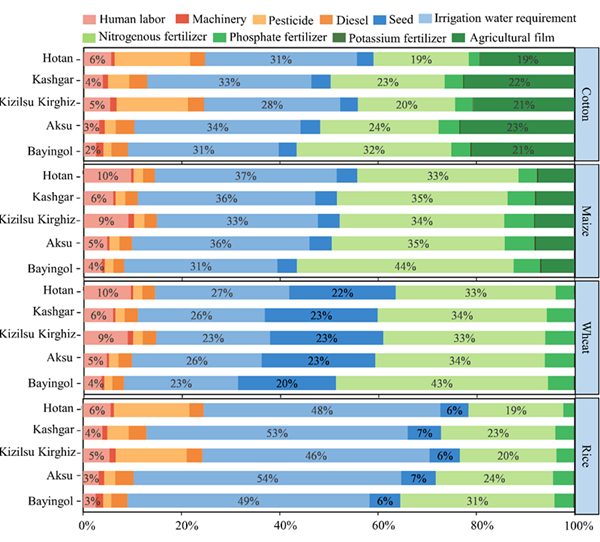Researchers Evaluated Water-Energy-Food Nexus in the Tarim River Basin
2022-07-19
Water, energy and food play an important role in promoting regional sustainable development, and agricultural is the main driver for coordinated development of the water-energy-food nexus (WEF nexus). In recent decades, along with the adjustment of cropping patterns, the consumption of agricultural water and energy consumption in the Tarim River Basin has continued to increase, and the productivity of agricultural resources has changed significantly, which has profoundly affected the coordinated development of the water-energy-food nexus in agricultural management in the Tarim River Basin.
Comprehensive evaluation of the water-energy-food nexus in agricultural management in the Tarim River Basin is crucial for improving the utilization productivity of agricultural inputs and optimizing agricultural management strategies.
Based on meteorological, statistical and survey data, a research team from Xinjiang Institute of Ecology and Geography, Chinese Academy of Sciences, quantitatively evaluated the major crop water requirements, energy equivalent and agricultural water-energy-food index (WEFNI) in the Tarim River Basin. The WEFNI of major crops in the river basin reveals the input efficiency of major crops.
The results indicated that different crops had significant differences in water and energy consumption, wheat had the lowest blue water requirements and cotton had the highest. In addition, the planting area of the TRB increased by 105×104 ha during the study period, with cotton accounting for 45% of the total planting area. The expansion of the planting area led to a continuous improvement in cotton production income, leading to the highest energy economic productivity in cotton (0.065 $/MJ). However, the increase in total water and energy consumption, water and energy mass productivity in cotton were lower than in the other three crops. The average WEFNI of rice, wheat, maize and cotton was 0.40, 0.45, 0.43 and 0.35, respectively. This demonstrated that wheat had the highest resources utilization productivity in agricultural inputs, while cotton had the lowest.
The related results were published in Agricultural Water Management, entitled “Comprehensive evaluation of the water-energy-food nexus in the agricultural management of the Tarim River Basin, Northwest China”.
Article link: https://www.sciencedirect.com/science/article/abs/pii/S0378377422003584

Fig. 1 The proportion of agricultural energy input in total energy consumption for rice, wheat, maize and cotton in the Tarim River Basin from 1990 to 2019.

Fig. 2 Interannual variations and trends in the water-energy-food nexus index (WEFNI) for main crops in the Tarim River Basin from 1990 to 2019.



